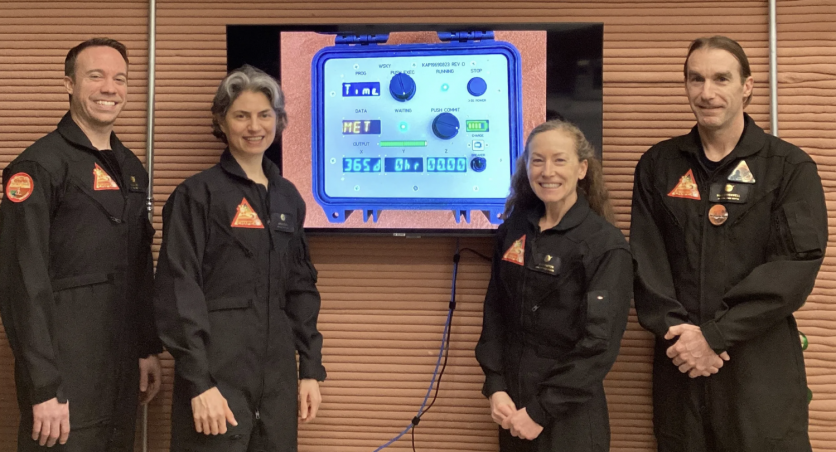At NASA's Johnson Space Center in Houston, an innovative experiment in human endurance and scientific discovery has wrapped up. This was not just about surviving in isolation but also a test of human strength and readiness for the next era of space exploration.

Emerging From the Simulated Mars Mission
A team from NASA's simulated Mars mission has emerged after spending a year inside a mock Mars habitat. The crew members spent over 12 months living in NASA's first simulated Mars environment at the Johnson Space Center in Houston.
They exited the artificial alien environment on Saturday around 5 p.m. Kelly Haston, Anca Selariu, Ross Brockwell, and Nathan Jones began their mission on June 25, 2023, entering the 3D-printed habitat as the inaugural crew of NASA's Crew Health and Performance Exploration Analog project.
As the mission commander, Haston expressed her delight at reconnecting with people after their extended isolation. Nathan Jones, a physician and the mission's medical officer, noted that their 378 days in isolation "went by quickly."
The four volunteers lived and worked within a 1,700-square-foot space to simulate a mission to Mars. Scientists and sci-fi enthusiasts often discuss this red planet, the fourth from the sun, as a potential destination for human exploration beyond the moon.
The first CHAPEA crew aimed to create potential conditions for future Mars missions by conducting simulated spacewalks, known as "Marswalks," growing and harvesting vegetables to supplement their supplies and maintain the habitat and equipment.
They also faced challenges similar to those a real Mars crew would encounter, such as limited resources, isolation, and communication delays of up to 22 minutes with Earth.
NASA has announced plans for two more CHAPEA missions. Future crews will keep performing simulated spacewalks and collecting data on physical and behavioral health and performance factors.
Reflections, Future Aspirations
Steve Koerner, deputy director of Johnson Space Center, said the first crew's experiments mainly focused on nutrition and its impact on performance. This research is crucial as NASA prepares for future manned missions to Mars.
The crew was separated from their families, followed a strict meal plan, and underwent extensive observation. Koerner noted that Mars is the goal and called the project a significant step in America's efforts to lead global space exploration.
After astronaut Kjell Lindgren, deputy director of flight operations, knocked on the habitat's door, the four volunteers emerged. They expressed gratitude for each other and those who had waited outside.
They also shared valuable lessons learned about the potential for a manned mission to Mars and its implications for life on Earth. Brockwell, the crew's flight engineer, reflected on the mission's impact, highlighting the significance of sustainable living for the well-being of everyone on Earth.
He expressed gratitude for the opportunity to participate in a year-long journey focused on planetary exploration, emphasizing the importance of using resources responsibly and managing waste efficiently.
According to Brockwell, these principles are essential for enabling humanity to live, dream, create, and explore on a significant scale, paving the way for remarkable achievements like exploring other worlds.
Anca Selariu, the science officer on the mission, frequently addressed inquiries about Mars' allure. She believed in Mars exploration due to its feasibility and potential to unify humanity and showcase our capabilities.
She emphasized that venturing to Mars represents a pivotal step forward for humanity as we chart a course into the coming centuries. Their experiences highlighted the power of teamwork in overcoming challenges for scientific advancement.
As NASA plans future missions and expands space exploration, CHAPEA's lessons will shape a future where distant stars become achievable destinations, not just points of light.

ⓒ 2025 TECHTIMES.com All rights reserved. Do not reproduce without permission.




